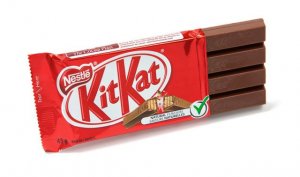- Intellectual property
- Intellectual property disputes

Longer Reads
UK Design Law after Brexit
Following the end of the post-Brexit transition period on 31 December 2020, EU-wide intellectual property rights including Registered Community Designs (RCD), Community Unregistered Design Right (CUDR), as well as EU designations of international design registrations, ceased to apply to the UK.
2 minute read
Published 15 January 2021
Key information
- Specialisms
- Business
Instead, comparable rights were automatically established under UK legislation in order to ensure continued protection for existing designs (both registered and unregistered) and to provide a consistent level of protection for new UK designs, which would previously have qualified under EU law.
As a result, there are now five rights that may apply to designs within the UK:
- UK registered designs
- Re-registered designs
- UK unregistered design right
- Continuing unregistered design right
- Supplementary unregistered designs
Registered designs
UK registered design rights continue to exist as they did before Brexit.
The UK Intellectual Property Office saw that comparable Re-Registered Designs (RRGDs) were created in relation to all EU registered designs (RCDs) existing at the end of the transition period. The same re-registration procedure applies for the majority of international registrations which previously designated the EU, provided certain criteria are met.
The (re-)registration process was automatic and free of charge, and the term of the resulting RRGD will match the remaining term of the corresponding RCD. Priority dates are also preserved.
The position was somewhat different where an RCD application was still pending at the end of the transition period. In such cases, the applicant had until 30 September 2021 to preserve their earlier filing date in the UK by making a corresponding UK application. This window has now closed.
Going forward, RRGDs will be treated independently of the EU rights from which they are derived, and will need to be maintained and renewed as self-standing UK intellectual property rights.
However, the following transitional arrangements continue to be worthy of note:
- Where a RCD was the subject of pending proceedings before a Community Design Court in the UK before 31 December 2020, the pre-Brexit rules of jurisdiction and enforcement will continue to apply, as if the UK were still an EU member state.
- Furthermore, if a RCD was subject to invalidity proceedings before 31 December 2020, and is subsequently declared invalid, the corresponding RRGD will also be declared invalid to the same extent.
Unregistered designs
UK law as it applies to unregistered designs has become somewhat more complicated due to the fact that the EU’s Community Unregistered Design Right (CUDR) and the UK’s own Design Right (UKUDR) were never direct equivalents to begin with. Specifically, CUDR protected both 2D and 3D designs for a relatively short-lived 3-year term, whereas UKUDR applied only to 3D designs (excluding surface decoration) for a longer period of 10 years.
Because these rights catered for different things, and to mitigate the loss of CUDR for UK designers, not one but two new species of unregistered design right have been introduced this year to subsist alongside UK UDR: Continuing Unregistered Design (CUD) and Supplementary Unregistered Design (SUD).
Both of these rights are intended to replicate (as far as possible) the EU’s CUDR in terms of what they are intended to protect and their duration. However, CUD is only available to designs which qualified for CUDR before the end of the transition period (and which would otherwise have lost the right to UK protection) for the remainder of their CUDR life cycle. For designs which post-date the end of the Brexit-transition period, the new SUD right will apply instead, but only to designs which are first disclosed in the UK.
What does this mean for my business?
In design law, as in many other areas, the full implications of the post-Brexit regime are likely to take some time for rights holders and the courts to untangle fully.
One of the main issues is likely to relate to the strategic choice now facing many designers as to where to disclose/publish new designs to ensure the most comprehensive level of protection. A first disclosure in the UK might attract SUD and UKUDR but will involve sacrificing entitlement to CUDR across the remaining 26 EU member states, and vice versa.
Much discussion has centred on the potential for simultaneous UK and EU online disclosure, however, this has yet to be tested in court so it remains unclear where, if anywhere, such a disclosure would actually attract unregistered design protection.
Thankfully, there is still the safety net in the form of the grace period of 12 months from first disclosure for applications to register a given design, whether in the UK or the EU.
The Collyer Bristow IP team can advise on all aspects of design right protection as well as in relation to all other intellectual property rights and overall strategy. Please contact us if you would like further advice on any of these points, or to discuss your own business requirements.
Related content
Longer Reads
UK Design Law after Brexit
Following the end of the post-Brexit transition period on 31 December 2020, EU-wide intellectual property rights including Registered Community Designs (RCD), Community Unregistered Design Right (CUDR), as well as EU designations of international design registrations, ceased to apply to the UK.
Published 15 January 2021
Associated sectors / services
Authors
Instead, comparable rights were automatically established under UK legislation in order to ensure continued protection for existing designs (both registered and unregistered) and to provide a consistent level of protection for new UK designs, which would previously have qualified under EU law.
As a result, there are now five rights that may apply to designs within the UK:
- UK registered designs
- Re-registered designs
- UK unregistered design right
- Continuing unregistered design right
- Supplementary unregistered designs
Registered designs
UK registered design rights continue to exist as they did before Brexit.
The UK Intellectual Property Office saw that comparable Re-Registered Designs (RRGDs) were created in relation to all EU registered designs (RCDs) existing at the end of the transition period. The same re-registration procedure applies for the majority of international registrations which previously designated the EU, provided certain criteria are met.
The (re-)registration process was automatic and free of charge, and the term of the resulting RRGD will match the remaining term of the corresponding RCD. Priority dates are also preserved.
The position was somewhat different where an RCD application was still pending at the end of the transition period. In such cases, the applicant had until 30 September 2021 to preserve their earlier filing date in the UK by making a corresponding UK application. This window has now closed.
Going forward, RRGDs will be treated independently of the EU rights from which they are derived, and will need to be maintained and renewed as self-standing UK intellectual property rights.
However, the following transitional arrangements continue to be worthy of note:
- Where a RCD was the subject of pending proceedings before a Community Design Court in the UK before 31 December 2020, the pre-Brexit rules of jurisdiction and enforcement will continue to apply, as if the UK were still an EU member state.
- Furthermore, if a RCD was subject to invalidity proceedings before 31 December 2020, and is subsequently declared invalid, the corresponding RRGD will also be declared invalid to the same extent.
Unregistered designs
UK law as it applies to unregistered designs has become somewhat more complicated due to the fact that the EU’s Community Unregistered Design Right (CUDR) and the UK’s own Design Right (UKUDR) were never direct equivalents to begin with. Specifically, CUDR protected both 2D and 3D designs for a relatively short-lived 3-year term, whereas UKUDR applied only to 3D designs (excluding surface decoration) for a longer period of 10 years.
Because these rights catered for different things, and to mitigate the loss of CUDR for UK designers, not one but two new species of unregistered design right have been introduced this year to subsist alongside UK UDR: Continuing Unregistered Design (CUD) and Supplementary Unregistered Design (SUD).
Both of these rights are intended to replicate (as far as possible) the EU’s CUDR in terms of what they are intended to protect and their duration. However, CUD is only available to designs which qualified for CUDR before the end of the transition period (and which would otherwise have lost the right to UK protection) for the remainder of their CUDR life cycle. For designs which post-date the end of the Brexit-transition period, the new SUD right will apply instead, but only to designs which are first disclosed in the UK.
What does this mean for my business?
In design law, as in many other areas, the full implications of the post-Brexit regime are likely to take some time for rights holders and the courts to untangle fully.
One of the main issues is likely to relate to the strategic choice now facing many designers as to where to disclose/publish new designs to ensure the most comprehensive level of protection. A first disclosure in the UK might attract SUD and UKUDR but will involve sacrificing entitlement to CUDR across the remaining 26 EU member states, and vice versa.
Much discussion has centred on the potential for simultaneous UK and EU online disclosure, however, this has yet to be tested in court so it remains unclear where, if anywhere, such a disclosure would actually attract unregistered design protection.
Thankfully, there is still the safety net in the form of the grace period of 12 months from first disclosure for applications to register a given design, whether in the UK or the EU.
The Collyer Bristow IP team can advise on all aspects of design right protection as well as in relation to all other intellectual property rights and overall strategy. Please contact us if you would like further advice on any of these points, or to discuss your own business requirements.
Associated sectors / services
- Intellectual property
- Intellectual property disputes
Authors
Need some more information? Make an enquiry below.
Subscribe
Please add your details and your areas of interest below
Article contributor
Mette Marie
KennedySenior Associate
Specialising in Intellectual property disputes, Commercial, Data protection, Digital and Intellectual property
Enjoy reading our articles? why not subscribe to notifications so you’ll never miss one?
Subscribe to our articlesMessage us on WhatsApp (calling not available)
Please note that Collyer Bristow provides this service during office hours for general information and enquiries only and that no legal or other professional advice will be provided over the WhatsApp platform. Please also note that if you choose to use this platform your personal data is likely to be processed outside the UK and EEA, including in the US. Appropriate legal or other professional opinion should be taken before taking or omitting to take any action in respect of any specific problem. Collyer Bristow LLP accepts no liability for any loss or damage which may arise from reliance on information provided. All information will be deleted immediately upon completion of a conversation.
Close









































